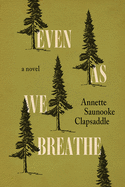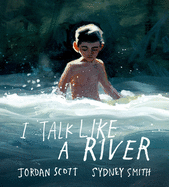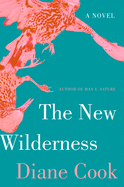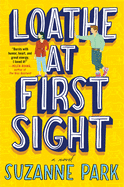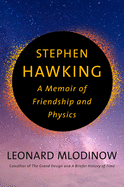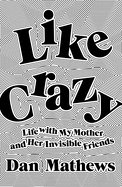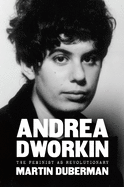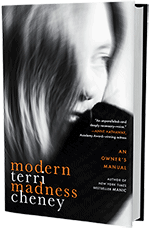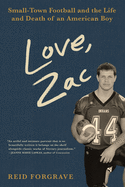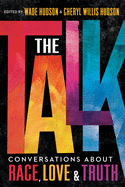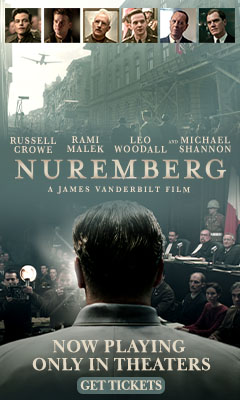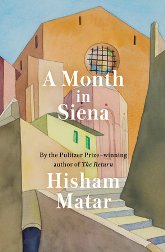 In an election year, art offers perspective. "A picture changes as you look at it and changes in ways that are unexpected. I have discovered that a painting requires time," Hisham Matar observes in his moving and perceptive memoir, A Month in Siena (Random House).
In an election year, art offers perspective. "A picture changes as you look at it and changes in ways that are unexpected. I have discovered that a painting requires time," Hisham Matar observes in his moving and perceptive memoir, A Month in Siena (Random House).
His encounters with Sienese paintings in London's National Gallery inspire an extended pilgrimage to the Italian city. In the Palazzo Pubblico, Matar spends hours contemplating a series of frescoes that Ambrogio Lorenzetti was commissioned to paint in 1338 on three walls of the Sala de Nove.
"This was what we had come to see," he writes. At the center of the composition is Lorenzetti's Allegory of Good Government, "a hymn to justice... If civic rule were a church this would be its altarpiece." The other walls feature The Effects of Good Government, where "a just, prosperous, peaceful and harmonious city is shown to exist side by side with a thriving and verdant countryside"; and The Effects of Bad Government, which "shows tyranny reigning and justice in chains."
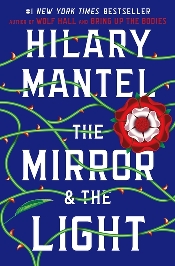 While reading Matar's book, I was also in the middle of Hilary Mantel's The Mirror & the Light (Holt). Suddenly, Thomas Cromwell, in the 16th century, recalls that in Siena, "you may see a fresco, where Good Government is set out on the wall, so that everyone can see what peace looks like. On the opposite wall, Bad Government has taken Peace by the hair. She is panicked, screaming, jerked to her knees."
While reading Matar's book, I was also in the middle of Hilary Mantel's The Mirror & the Light (Holt). Suddenly, Thomas Cromwell, in the 16th century, recalls that in Siena, "you may see a fresco, where Good Government is set out on the wall, so that everyone can see what peace looks like. On the opposite wall, Bad Government has taken Peace by the hair. She is panicked, screaming, jerked to her knees."
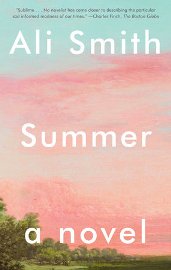 And soon after, in Ali Smith's Summer (Pantheon), a character visits Siena "for the day to see the Lorenzetti pictures in the town hall. The Good and Bad Governance.... The Good Governance wall, she says, has this perfect balance and harmony to it, which is also somehow deeply present in the fact that it's in amazing condition. Whereas the bad governance wall has deteriorated quite badly."
And soon after, in Ali Smith's Summer (Pantheon), a character visits Siena "for the day to see the Lorenzetti pictures in the town hall. The Good and Bad Governance.... The Good Governance wall, she says, has this perfect balance and harmony to it, which is also somehow deeply present in the fact that it's in amazing condition. Whereas the bad governance wall has deteriorated quite badly."
Coincidental readings? Cautionary tales? Matar writes: "The past and future stimulate our imagination; the present overwhelms it." --Robert Gray, editor
Even as We Breathe
by Annette Saunooke Clapsaddle
Debut author Annette Saunooke Clapsaddle's Even as We Breathe is a coming-of-age novel about Cowney Sequoyah, a young man whose desire to leave the Cherokee reservation in Cherokee, N.C., is granted when he is offered a job at the Grove Park Inn and Resort in Asheville. With World War II raging, the resort has been converted into a gilded cage for Axis diplomats--a fascinating historical episode that Clapsaddle brings to light. While Cowney finds his horizons expanded and perhaps even a chance at love, he is trailed by bigotry that becomes impossible to shrug off when he's accused of a terrible crime.
Clapsaddle establishes an enthralling sense of place that takes readers from the luxury of the resort to the wildfire-prone forests of rural North Carolina. The town of Cherokee brims with fascinating, eccentric characters, like Tsa Tsi and his monkey, Edgar, who seem as tied to the setting as "mud-chinked log cabins burrowed into mountain hollers." Cowney is caught at a crossroads between the sometimes comforting, sometimes suffocating pull of home and an uncertain future in a country that granted citizenship to Native Americans only a few decades prior. Cowney's bitter uncle Bud proves prophetic when he warns Cowney to watch his step in the resort/prisoner-of-war camp "or they're liable to lock you up with 'em. You probably look more like a foreigner than a soldier." Even as We Breathe stands out for its portrayal of what it's like to try to find a place for yourself in a country that doesn't want you. --Hank Stephenson, manuscript reader, the Sun magazine
Discover: A young Cherokee man takes a job at a resort-turned-prisoner-of-war camp during World War II in a debut novel that thrives on an excellent sense of place.
Mystery & Thriller
When These Mountains Burn
by David Joy
The distraught father of a drug addict gets help from the most unlikely source when he tries to stop the dealers feeding his son's habit in the visceral thriller When These Mountains Burn.
2020, North Carolina: Fire rages through the Tellico Mountains, raining thick ash on towns where rampant drug use is causing another kind of destruction.
Ray Mathis's son, Ricky, has broken into Ray's house yet again. Both father and son know there's nothing left to steal, but a desperate Ricky needs to support his drug habit and that need can't grasp reality. Ricky is on the phone begging his father for help, when a man comes on and threatens to kill Ricky unless Ray pays the money Ricky owes. The dollar amount doesn't matter. Ray doesn't have it because he suffers from his own addiction: the need to save someone who doesn't want to be saved. And just like Ricky, Ray is willing to die for his unhealthy habit. Ray makes a wild attempt to stop the drug dealers on his own, but the local police are corrupt and suddenly Ray is on the run from both the "good" and the bad guys.
David Joy (The Weight of This World) plops readers into the unsettled consciousness of people who tie off, find a vein and inject a needle full of temporary salvation. Reading about the prick, burn and sting of the process is tough, but Joy makes it tougher to judge these characters by allowing the least likely of them to be the hero. --Paul Dinh-McCrillis, freelance reviewer
Discover: A desperate father tries to save his drug-addicted son one last time in this nerve-wracking thriller.
The Deadly Hours
by Susanna Kearsley, C.S. Harris, Anna Lee Huber, and Christine Trent
Four seasoned authors join forces in The Deadly Hours, an anthology of atmospheric historical mystery novellas connected by a cursed watch and the trail of murders that follow it through time. The watch, made from gold violently stolen during the 1697 raid of Cartagena, must pass through the four elements to be freed from the curse. While each story is complete on its own, reading all of them provides the closure and justice that mystery readers crave.
With the exception of the last, each novella follows a couple from the author's established books. In Susanna Kearsley's 1733-set Weapon of Choice, Jacobites engage in some political subterfuge. Anna Lee Huber's In a Fevered Hour centers on her 1831 mystery-solving anatomist Lady Darby. Christine Trent's 1870 undertaker heroine from her Lady of Ashes series unearths the watch in Pocketful of Death. The final novella, C.S. Harris's Siren's Call, introduces new characters in 1944 and not-so-gently guides the watch to its final resting place. Each time the watch reappears, murder follows. Readers will enjoy puzzling along with the protagonists. Is the watch truly cursed? Or is it one big coincidence?
Each novella retains the qualities of the author's distinct voice, and series fans will be eager to watch familiar characters solve a case with a touch of the paranormal. These authors write stories with similar tones and themes, so readers unfamiliar with one or more of the authors may just find a new favorite. --Suzanne Krohn, editor, Love in Panels
Discover: Fans of historical mystery will happily travel through time to follow Kearsley, Harris, Huber and Trent and the cursed watch they've invented in an anthology of four connected novellas.
Science Fiction & Fantasy
The New Wilderness
by Diane Cook
In this shattering work of dystopian fiction, love and survival intertwine until neither is recognizable from the other. The New Wilderness, the Booker Prize-longlisted novel by author and former This American Life producer Diane Cook, takes a refreshingly raw spin on an age-old climate disaster story: the earth has all but been destroyed by industrialization. Most of the population live in the polluted City, where the air is so poisonous to children that childbirth is discouraged. But a lucky few have been selected for an experimental foray into the Wilderness State, the last enormous parcel of protected land, where the flora and fauna are wild and real. Bea is an interior designer in the City, where her daughter, Agnes, is dying; she keeps coughing up blood. Desperate, Bea and her husband, Glen, are first in line to take Agnes into the Wilderness State with a group of other Community members, where they hope the clean air will save Agnes's life. In return, they'll survive--and check in regularly at Posts for data collection. But, of course, simply living in the Wilderness State is a brutal, beautiful journey, and it challenges everything Bea and Agnes know about their love for each other.
Cook's writing is both a melodic ode to nature and a devastating eulogy to what has been lost, both in the real world and her fictional one. As Agnes becomes wilder, so does her mother, and their diverging natures soon bring them to a crossroads. This is a gorgeous tale of motherhood and the will to live. --Lauren Puckett, freelance writer
Discover: In a world where climate change has destroyed all but one parcel of land, Diane Cook builds a place so rich it feels like home, even as it frightens in its ferocity.
Romance
Loathe at First Sight
by Suzanne Park
Loathe at First Sight, the first adult novel by Suzanne Park (The Perfect Escape), is a hilarious romcom chock-full of snark and social commentary. Melody Joo is new to the gaming business, but she's determined to prove herself as a production assistant, in spite of her racially tone-deaf "sulky toddler" of a boss, rampant sexism in the office and the attentions of her insufferable (though increasingly attractive) white intern Nolan, the boss's nephew. When Melody jokingly suggests a first-person shooter game "featuring shirtless male strippers" trying to survive the end of the world, her "pitch" is taken seriously, and suddenly Melody is in charge of Ultimate Apocalypse. Violent threats from Internet trolls, the toxic atmosphere in the company, her Korean immigrant parents' attempts at matchmaking and the increased attentions from her smart, funny and really hot intern are enough to throw anybody off their game. But with snarky comebacks, a no-nonsense attitude and unflagging determination, Melody is up for the challenge. That is, if she can keep her mind off of Nolan.
Park takes aim at the pervasive sexist culture in the gaming industry as well as the casual racism BIPOC individuals face every day, all while her protagonist navigates the unknown territory of mutual attraction. The palpable tension between Melody and Nolan is delicious, turning from mutual dislike to a forbidden attraction at a believable pace and all without taking away from Melody's personal and career-related accomplishments. With such opinions as "a salad is a giant, colorful bowl of disappointment," Melody is a delight to root for, as is the forbidden romance that builds to a satisfying conclusion. --Jennifer Oleinik, freelance writer and editor
Discover: A fun, snarky romantic comedy set in the world of video game development tackles sexism, racism and the temptations of a very attractive intern.
Biography & Memoir
Stephen Hawking: A Memoir of Friendship and Physics
by Leonard Mlodinow
Renowned physicist Stephen Hawking was as much of an enigma as the questions he dedicated his career to studying. Diagnosed with motor neurone disease in his 20s, Hawking continued to pursue groundbreaking physics research and translate much of it for a popular audience until his death at age 76 in 2018. Physicist Leonard Mlodinow, Hawking's colleague and co-author on two books (A Briefer History of Time and The Grand Design), shares reflections on his long collaboration with Hawking in his 10th book for adults, Stephen Hawking: A Memoir of Friendship and Physics.
Mlodinow (Elastic; The Upright Thinkers) combines biographical facts and anecdotes about Hawking with his own first impressions and many later encounters. The majority of the book traces the two scientists' collaboration on The Grand Design, a process that required Mlodinow to spend blocks of time in Cambridge, England, where Hawking lived and worked. With this new window into Hawking's life, Mlodinow was able to observe not only his friend's intellectual activity, but the close, complicated relationships he sustained with his assistant Judith; his multiple caregivers; his second wife, Elaine Mason; and other friends. The two men also forged a connection that went beyond physics, as Mlodinow writes: "What began as an alliance of intellect grew into a connection of our humanity."
Readers who are interested in popular science, cosmology or Hawking's work will find much to ponder here, but Mlodinow's book is also a thoughtful, tender yet unsentimental story of an extraordinary friendship. --Katie Noah Gibson, blogger at Cakes, Tea and Dreams
Discover: Physicist Leonard Mlodinow's keenly observed 10th book is a nuanced portrayal of his friendship with Stephen Hawking.
Like Crazy: Life with My Mother and Her Invisible Friends
by Dan Mathews
"As an atheist in southern Virginia... I do not believe in gods above and devils below, [but] I do honor the instinct inside that tells you the right thing to do. That's why I decided to buy a house and move in my ill, unhinged mother." Dan Mathews, a senior v-p at PETA and the unattached "happy-go-lucky homosexual" in his family, felt it his duty to take in his 78-year-old mother, Perry. The "deviant son was stuck with the crazy mother," like Norman Bates in Psycho, and Perry's final years would test their limits and cement their bond.
Perry had always been different. Her children previously chalked up her paranoid or delusional conduct to the tormented childhood she rarely talked about. Living together, Mathews senses things are seriously amiss. Their hilarious but often fraught-with-danger existence shatters when Perry seems to break, and Mathews frantically tries to get her help in a system not known for its user-friendliness or navigational ease.
In Like Crazy, Mathews (Committed) memorializes his mother's life with the bawdy and raucous tale of their relationship and the merry band of misfits they attract. Side-splitting laughter turns deadly serious as things take a horrific turn, but Mathews is a force to be reckoned with and the final descent is endearingly lovely. Mathews is so funny (lamenting he can't set his mother adrift on an ice floe, "another tradition ruined by global warming") it's easy to overlook his storytelling talents until things get gritty and humor is stripped away. Like Crazy is an utter gem. --Lauren O'Brien of Malcolm Avenue Review
Discover: A hilarious son who deems himself unqualified to take care for a low-maintenance plant takes in his elderly mother, who suffers from undiagnosed mental illness.
Social Science
Smart Wife: Why Siri, Alexa, and Other Smart Home Devices Need a Feminist Reboot
by Yolande Strengers and Jenny Kennedy
These days a key phrase such as "Siri," "Alexa" or "Okay, Google" can launch a helpful, usually feminized, voiced assistant ready to answer any question. Other smart devices, such as robot vacuums and refrigerators, can be connected to the Internet of Things and are slowly becoming more ubiquitous. But, as technology and communications researchers Yolande Strengers and Jenny Kennedy observe, there is a pattern of assigning genders to such assistance, and this flags some concern about how, even with digital aids, work itself is still rendered in ways that devalue feminized labor.
From domestic tasks to emotional labor to sex, there is a push to provide non-human solutions, so that everyone might have a "smart wife" without questioning what it is that a "wife" does in the first place. Strengers and Kennedy consider how this construction reiterates sexist, patriarchal messaging by basing the purpose of digital devices, intentionally or not, on the white, middle-class, heteronormative, housework- and homemaking-focused 1950s housewife. They note, "Smart wives hark back to nostalgic stereotypes that people are now being told (through smart tech marketing) that they deserve and should desire. Sure, overtly gendered smart wives are familiar, cute, sexy, friendly, and 'easy to use'--but at what cost to society?"
Their book attempts not only to examine the various costs to society, but also to provide an alternative. In their fascinating "manifesta," they aim to "reboot" how society might reconfigure its relationship to smart devices "without the encumbrance of outdated traditions." As such, gender-progressive practices might be more fully realized in a more digital age, and more ethically, too. --Michelle Anya Anjirbag, freelance reviewer
Discover: This fascinating exploration of AI asks what the assignment of gender of its devices says about the societies they are meant to help.
Andrea Dworkin: The Feminist as Revolutionary
by Martin Duberman
Discover: This superlative biography of the woefully misunderstood feminist writer and activist reveals the multiple ways that she was ahead of her time.
Psychology & Self-Help
Modern Madness: An Owner's Manual
by Terri Cheney
"There are very few things more frustrating than trying to describe the state of your mental health to someone else," writes Terri Cheney in the pages of Modern Madness: An Owner's Manual. "It's amorphous and abstract; it defies pinning down." But she has proven herself a master in doing just that--describing the state of her mental health and pinning down her experiences--in her writing, further evidenced across nearly every page of Modern Madness, her fourth book about living with the "long, inarticulate howl" of mental illness.
Cheney started writing about her experience living with bipolar disorder after "a whole lot of terrible" suicide attempts, encounters with the law, broken relationships and, eventually, a stint in a mental hospital and several rounds of electroshock therapy. "I felt suffocated by all the things that weren't being said," she recalls. "And so, to save myself, I started to write." That writing led to her first memoir, Manic, which went on to become a bestseller and the basis of an episode of Netflix's Modern Love.
In Manic, Cheney "threw away all the clinical stuff." That "stuff" makes a comeback in Modern Madness, as Cheney combines clinical research summaries and accounts of various symptoms and expressions of mental illness with anecdotes and stories about her own lived experience. This combination bridges the potential gap between the "one-size-fits-all approach" of modern medicine and the individual experiences of each person living with a diagnosis of mental illness; by including both the universal and the unique, the studied and the personal, Cheney's book evolves to become more than a layperson's analysis of mental health, and more than a memoir. It is, as the subtitle promises, an "owner's manual," offering readers a guide to living with mental illness.
The framing of Modern Madness as an owner's manual defies simple description or easy genre placement. Like any good primer, it starts with the basics: how mental illness might appear and common symptoms (depression, mania, cycling, suicidality and physical manifestations of all of the above). Cheney then offers "User Precautions," "Instructions for Use" (with great detail about relationships of both the romantic and non-romantic variety) and "Troubleshooting" tips to discern good coping skills from bad. "Maintenance" outlines the role of medication and therapy, and "Warranties" urges readers to create a culture of acceptance when it comes to mental illness. Because it varies greatly from one person to the next--even those with the same diagnosis--Cheney's exploration of the subject is by no means exhaustive or prescriptive, though she does offer practical, actionable advice.
Any book about mental illness--especially when that illness led to so many moments of "terrible," as Cheney recalls--inevitably has moments of darkness, and Modern Madness is no exception. Cheney writes with a raw sense of urgency about the awful narrative inside her head during suicidal episodes, and the manic highs accompanied by extreme "drinking and driving and dating." But alongside those darker moments are stories of hope and humor, some laugh-out-loud funny. In recalling a moment when a case worker in a mental hospital asked her about her gang history, Cheney notes that she responded, "Varsity cheerleader." Cheney pokes fun at the very worn-out advice to "just exercise more!" when depressed (and offers advice on how to support a depressed person in ways that might actually be useful, all of which center on giving the person in question space to talk about their pain and be heard). Let it not be said that talking about mental illness has to be dry; the low moments in Modern Madness make these small moments of humor stand out all the more.
In the introduction, Cheney writes that Modern Madness is for those living with mental health issues themselves, but also "the people who love and sometimes want to strangle them; the health care professionals trying to help; and the millions of other people whose lives are affected by mental illness in one form or another and don't understand what it is, or more important, what the hell to do about it." It's hard to imagine a more expansive--or accurate--audience for this important and timely book. Modern Madness should be required reading for anyone impacted by mental health matters--and, as Cheney says, that's pretty much everyone. --Kerry McHugh
Sports
Love, Zac: Small-Town Football and the Life and Death of an American Boy
by Reid Forgrave
Fulfilling his pledge to make sure Zac Easter didn't die in vain, in Love, Zac: Small-Town Football and the Life and Death of an American Boy, sportswriter Reid Forgrave calls for the United States to examine its football obsession and the evidence that athletes' head injuries cause Chronic Traumatic Encephalopathy (CTE), a debilitating brain disease tied to early death.
At 24, Zac ended his once-promising future with a self-inflicted shotgun blast. One of three boys in a close-knit Iowa "football family," Zac was a tough player from third grade through high school, "always smearing people," while hiding the pain and migraines from at least five concussions. He struggled through college, and pain and depression led to substance abuse. Zac's journals reveal that he suspected CTE, and his suicide letter stressed, "please donate my brain to the sports legacy brain bank." Zac was right; his autopsy revealed CTE.
Alternating with Zac's story, Forgrave covers football history--from 1869 to 2019's multi-billion-dollar sports entertainment industry--and the slow pace of head trauma research. A 2005 study revealing that "the kind of repetitive blows to the head the NFL players experience could cause debilitating brain damage" was for years discredited by the NFL. Zac died in 2015, the year the first-ever meeting about the treatment of concussions convened.
Love, Zac, a heartbreaking biography, also acknowledges football's wide appeal. But Forgrave, a fan, cites the "football hypocrisy" of a country that acknowledges its dangers, positing that "every resource we have" must be used to make it "as safe as possible"--or "renounce the sport completely." (A percentage of the book's sales will go to CTE Hope, a nonprofit dedicated to developing an instant test to identify brain injury levels.) --Cheryl McKeon, bookseller, Book House of Stuyvesant Plaza, Albany, N.Y.
Discover: A biography of a young football player whose suicide followed years of head injuries underscores the moral ambiguity of supporting life-threatening sports.
Children's & Young Adult
The Talk: Conversations About Race, Love & Truth
by Wade Hudson and Cheryl Willis Hudson, editors
In the reflective anthology The Talk: Conversations About Race, Love & Truth, well-known authors and illustrators use stories, poems, illustrations and letters to share their stories of racism, advocacy and lessons in self-love.
Wade Hudson and Cheryl Willis Hudson (We Rise, We Resist, We Raise Our Voices), founders of Just Us Books, a publishing company dedicated to publishing diverse books for children, have with The Talk brought together a collection of essays, short stories and poems that are essential. Each piece is distinct from the next, and the anthology includes narratives such as a child being told how to conduct themselves in front of cops (Tracey Baptiste, "Ten"); the loneliness at being the only Black person in a room (Sharon Dennis Wyeth, "I'm a Dancer"); and the understanding that conversations about race are tough but necessary to have (Adam Gidwitz, "Our Inheritance”). Though each submission is short, they all hold powerful messages. For example, Meg Medina writes in "Hablar": "No language is better than another. No tongue makes one person more real or important than someone else." These deeply personal stories may console readers who feel outcast and let them know they're not alone.
Through embracing the stories of Asians, Blacks, Latinx and Indigenous people, The Talk's distinctive revelations convey the message that the lives of BIPOC matter. This collection should speak to any child or adult--especially BIPOC children and adults--who has been affected by systemic racism and inspired by the Black Lives Matter movement. --Kharissa Kenner, children's librarian, Bank Street School for Children
Discover: The Talk is an anthology filled with abiding inspirational messages of self-love and love for others.
I Talk Like a River
by Jordan Scott, illus. by Sydney Smith
In this moving, deeply personal account, I Talk Like a River explains how one boy navigates "a bad speech day" with the help of his understanding father and a visit to his "favorite place in the world."
The boy wakes each morning with "the sounds of words all around," but some are too difficult to say. One especially unbearable day, his teacher insists that he answer a question. The child's classmates watch his "lips twist and twirl," their mouths "giggling and laughing" while he tries to speak. Fortunately, after school, his dad suggests a trip to the river, a river that moves the way the boy speaks--"bubbling, churning, whirling, and crashing" before it finds its "smooth and glistening" calm after the rapids. The boy finds comfort here because, just like him, "even the river stutters."
By tying the experience of stuttering to nature, award-winning poet Jordan Scott (who is a stutterer) skillfully allows the protagonist to feel part of a grander design, and the hurt caused by a mouth that "isn't working" can be put into perspective. Scott's end notes explain how the river taught him "to think differently about fluency," and his beautiful text attests to his success. Sydney Smith's (Small in the City) astonishing watercolor, ink and gouache art illuminates what is written, and what lies beneath. The impressionistic paintings bring readers close to the boy's pain and allow them to experience, seemingly firsthand, his solace, too. There is plenty for all readers to glean from this boy's "proud river." --Lynn Becker, blogger and host of Book Talk, a monthly online discussion of children's books for SCBWI
Discover: A trip to the river gives a boy who stutters a new way to look at his relationship with words.
Hot Pot Night!
by Vincent Chen
"What's for dinner?" is an end-of-day call to action in homes everywhere. Debut author/illustrator Vincent Chen answers with Hot Pot Night!, a toothsome treat that gathers family, friends and neighbors for what will be an evening of delectable communal dining.
As the residents of an apartment building return home, thoughts turn to an evening meal. As the hungry lean out of windows, not quite sure how to quell the pangs, a boy shouts out for all to hear, "Let's have hot pot!" Apartment by apartment, the neighbors assemble, each bringing a necessary component. Everyone takes turns preparing--boiling the broth, washing and chopping the ingredients, adding the meat. The anticipation is well worth the results, as spoons, chopsticks and bowls sate the brood with "hot pot, hot pot, tasty hot pot" until all that's left is the promise of future gatherings for more hot pot.
Rhode Island School of Design-trained Chen creates a diverse community with characters of various ages, ethnic backgrounds and familial units. His short and rhythmic text invites even the youngest readers to join in. "Hot pot," Chen explains at book's end, "is a Chinese soup that literally brings people together and encourages them to share." Adding his mother's recipe further encourages participation--with the added caution to "always cook with an adult." Chen's digitally rendered pages, presented predominantly in a palette of golds, oranges and browns, seem to reflect the fading light outside, while beckoning audiences into brighter cozy spaces inside, where friends gather, appetites grow and hot pot entices. Warm and welcoming, Hot Pot Night! proves to be a nourishing experience for bellies and hearts alike. --Terry Hong, Smithsonian BookDragon
Discover: Neighbors and friends gather together, combining myriad ingredients to share an abundant, nourishing feast on Hot Pot Night!
| Advertisement nuremberg--now playing in theaters |


